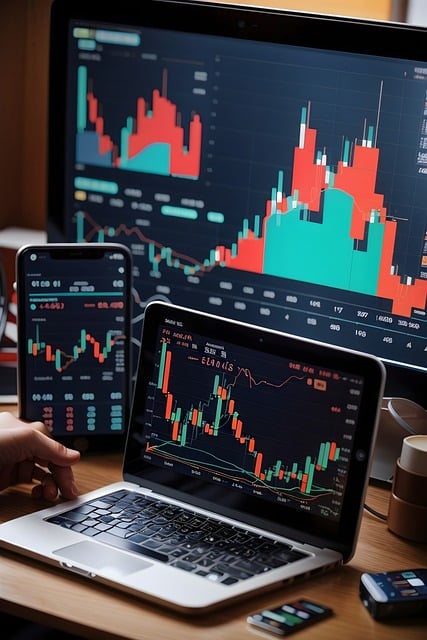How to Trade Crypto: Mastering Technical Analysis
Author: Jameson Richman Expert
Published On: 2024-11-02
Prepared by Jameson Richman and our team of experts with over a decade of experience in cryptocurrency and digital asset analysis. Learn more about us.
In the fast-paced world of cryptocurrencies, technical analysis has become an invaluable tool for traders aiming to navigate the volatile markets. This article aims to provide a comprehensive guide on how to effectively trade crypto using technical analysis. We will explore key concepts, tools, and strategies that every trader should be familiar with. Let's dive in!

Understanding Technical Analysis
Technical analysis (TA) is the study of historical price movements and trading volumes to predict future market behavior. Unlike fundamental analysis, which focuses on a cryptocurrency's intrinsic value determined by its underlying technology and market demand, technical analysis seeks to identify patterns and signals based on price charts and indicators.
The Core Principles of Technical Analysis
- Market Discount Everything: Technical analysts believe that all relevant information, whether fundamental or geopolitical, is already reflected in the price of a cryptocurrency.
- Price Moves in Trends: Cryptocurrencies tend to move in trends, whether upward (bullish), downward (bearish), or sideways (consolidation). Identifying these trends is crucial for successful trading.
- History Tends to Repeat Itself: Market psychology leads to repetitive patterns in prices. Understanding these patterns allows traders to forecast potential price movements.
Getting Started with Technical Analysis
If you're new to technical analysis, here are the essential steps needed to kickstart your trading journey:
1. Selecting a Trading Platform
The first step in your technical analysis journey is to choose a reliable trading platform. Make sure to look for features such as:
- User-Friendly Interface: Intuitiveness is key to making effective trading decisions.
- Charting Tools: Robust charting features will help you visualize your analysis.
- Access to Different Markets: Ensure the platform supports a wide variety of cryptocurrencies.
2. Learning to Read Charts
Charts are the primary resource for traders, and getting comfortable with their various forms is essential:
Line Charts
The simplest form of chart, line charts display the closing price over a certain period. This type of chart is useful for getting a quick overview of price trends but does not provide information about the trading volume or price fluctuations within a set timeframe.
Bar Charts
Bar charts provide more detailed information compared to line charts. Each bar represents the open, high, low, and close prices (OHLC) for a specified timeframe, offering insights into price volatility and trends.
Candlestick Charts
Candlestick charts are the most popular type of charts used by traders. Each candlestick provides similar information as a bar chart, but they also convey market sentiment through their shapes and colors, making them more visually appealing and easier to interpret.
Key Technical Indicators
Technical indicators help traders analyze market conditions and make more informed decisions. Here are some widely used indicators:
1. Moving Averages
Moving averages smooth out price data over a specific timeframe to help identify trends and potential reversal points. The two most common types are:
- Simple Moving Average (SMA): The average price over a specified number of periods.
- Exponential Moving Average (EMA): A more reactive average that gives greater weight to recent prices.
2. Relative Strength Index (RSI)
The RSI measures the speed and change of price movements, helping traders determine overbought or oversold conditions. The RSI ranges from 0 to 100 and is usually interpreted as follows:
- Above 70: Overbought condition.
- Below 30: Oversold condition.
3. Moving Average Convergence Divergence (MACD)
The MACD is a trend-following momentum indicator that shows the relationship between two moving averages. It consists of:
- Signal Line: The 9-day EMA of the MACD Line.
When the MACD line crosses above the signal line, it generates a bullish signal, and when it crosses below, it indicates a bearish signal.

Chart Patterns to Recognize
Chart patterns are formations created by the price movements of cryptocurrencies over time and can signal potential trend reversals or continuations. Here are a few essential patterns:
1. Head and Shoulders
The Head and Shoulders pattern typically indicates a bullish-to-bearish trend reversal. It consists of three peaks: a higher peak (head) between two lower peaks (shoulders).
2. Flags and Pennants
Flags and pennants are continuation patterns that indicate a short-term pause in the prevailing trend before it resumes. Flags are rectangular, while pennants are triangular.
3. Double Tops and Bottoms
A double top is a bearish reversal pattern that appears after an uptrend, while a double bottom is a bullish reversal pattern that appears after a downtrend. Both consist of two peaks or troughs at roughly the same price level.
Risk Management in Crypto Trading
When trading cryptocurrencies, risk management is paramount. Here are strategies to protect your investments:
1. Setting Stop-Loss Orders
A stop-loss order automatically sells a cryptocurrency when it reaches a certain price, preventing further losses. This tool is essential for managing your risk and maintaining discipline during turbulent market conditions.
2. Position Sizing
Determining the appropriate position size involves assessing how much capital you are willing to risk on a given trade. A common rule of thumb is to risk no more than 1-2% of your total trading capital on any single trade.
3. Diversifying Your Portfolio
Diversification involves spreading your investments across different cryptocurrencies rather than investing all your capital in a single asset. This strategy helps mitigate the risks associated with any single cryptocurrency's price fluctuations.
Developing a Trading Strategy
A successful trading strategy combines technical analysis with a defined approach that suits your trading style. Here are a few popular strategies to consider:
1. Day Trading
Day trading involves opening and closing trades within a single day to capitalize on intraday price movements. This strategy requires constant monitoring of price charts and can be more suited for those who can dedicate significant time to trading.
2. Swing Trading
Swing traders hold positions for several days or weeks to take advantage of medium-term price movements. This strategy allows for less time commitment than day trading, making it appealing to those with busy schedules.
3. Position Trading
Position trading is a long-term strategy that focuses on fundamental factors and trend analysis. Traders using this strategy may hold positions for months or even years, conducting less frequent trades.

Staying Updated with the Market
To be successful in crypto trading, staying informed about market developments, news, and changes in regulations is critical. Here are some steps to ensure you're up to date:
1. Follow Reputable News Sources
Numerous online platforms, blogs, and influencers cover cryptocurrency news. Ensure that the information you consume comes from credible sources to avoid misinformation.
2. Join Trading Communities
Participating in online forums and social media groups dedicated to crypto trading can provide you with valuable insights from seasoned traders and help you stay informed about trends.
My Opinion on the Future of Crypto Trading
As someone who has closely followed the evolution of cryptocurrencies, I believe that technical analysis will continue to play an increasingly significant role in shaping trading strategies. While it's important to acknowledge the inherent volatility associated with digital assets, the rise of sophisticated tools and technologies can pave the way for more informed trading practices.
Ultimately, traders must balance technical analysis with an awareness of market fundamentals and be prepared to adapt to the dynamic landscape of the cryptocurrency market. With the right combination of knowledge, experience, and emotional resilience, any trader, whether a novice or seasoned, can enhance their potential for success in this exciting financial frontier.
Conclusion
In conclusion, mastering technical analysis is a crucial component of successful cryptocurrency trading. By understanding price charts, key indicators, and market patterns, traders can make informed decisions to manage their risks effectively. Whether you choose day trading, swing trading, or position trading, remember that patience, practice, and continuous learning are essential for long-term success in the crypto markets. Happy trading!